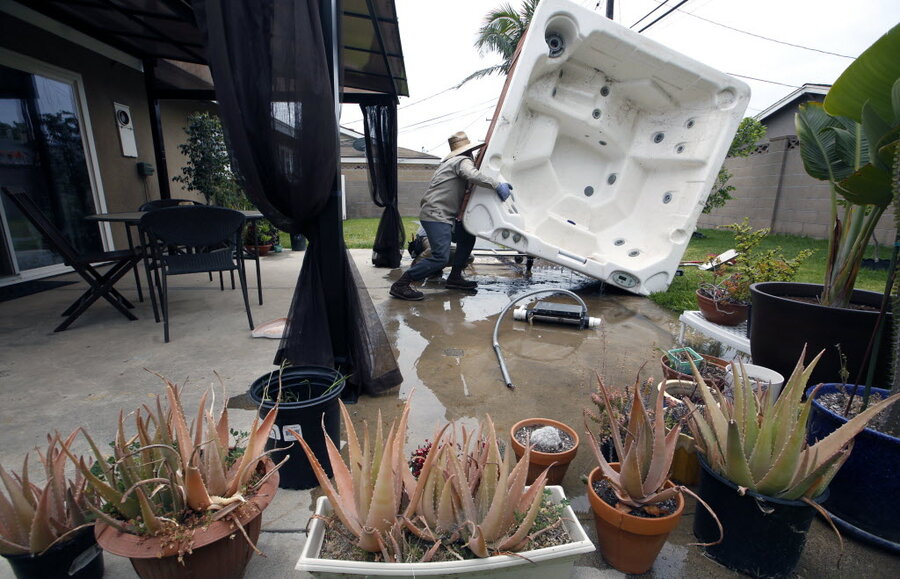California doesn't let a drought go to waste
Loading...
Researchers at the University of Twente in the Netherlands recently announced a startling global statistic. About two-thirds of the world’s population experience a severe water scarcity for at least one month during the year. About half of these 4 billion people live in India and China. And the country that comes in third for periodic water shortages? The United States, with California as drought central.
Yet something just as startling should be noted about California and how its 39 million people have responded to a long and historic dry spell.
Since April of 2015, state residents have mostly complied with a mandate by Gov. Jerry Brown to reduce water usage by 25 percent over their 2013 usage. They have ripped up lawns for drought-tolerant landscaping, turned sewage into drinkable water, grown crops and livestock with less water, and moved to build desalination plants. Restaurants now wait for customers to request water rather than simply serve it.
Last year, a poll found Californians consider water and drought the most important issue facing the state. Their water savings was enough to supply 6 million people.
If this new culture of resilience and innovation persists, California might be a model for other parts of the world in how to transform conventional thinking about water. The state does not so much lack water as it does a fuller understanding of its own capacity to better use the water it has.
Note this, however: Governor Brown had to threaten to fine local water districts to achieve the remarkable compliance. His earlier pleas for voluntary conservation did not work so well. Still, the state has now started habits that might lead to a climate-resilient future – if sustained. In coming days, state water regulators will decide how much to change the mandate in light of better snowfall in the mountains this past winter.
The state is not alone in forsaking old water practices. Last December, after a global accord on climate change was reached in Paris, President Obama pushed federal agencies to improve the nation’s water usage. The administration hopes for as much as a 33 percent reduction. It has a good example to follow in California.





